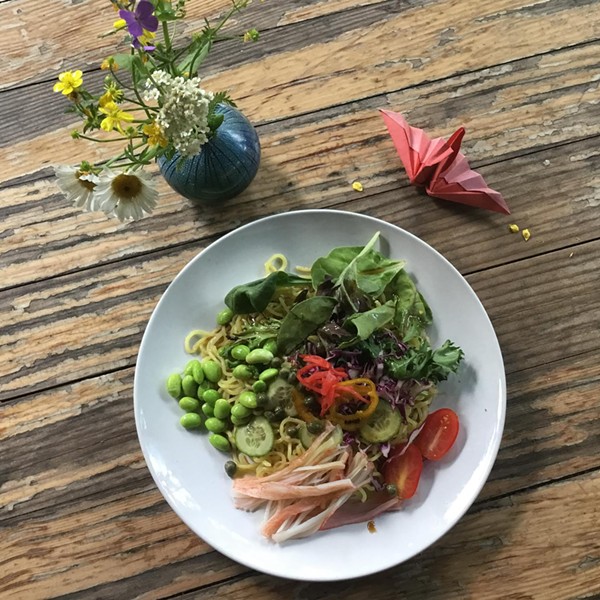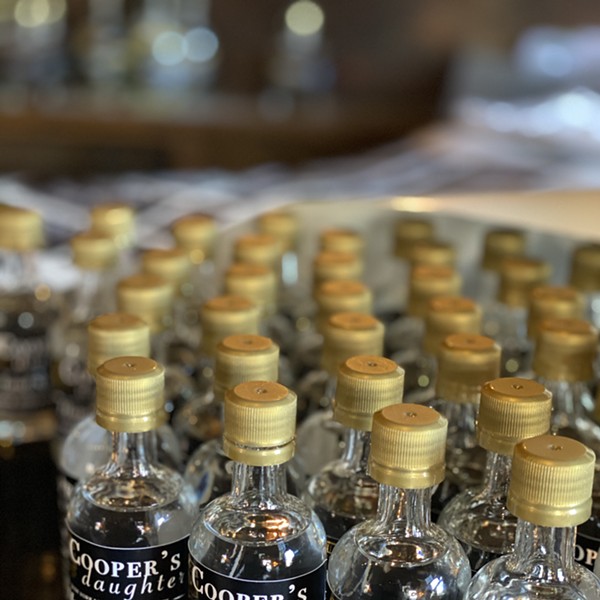The “standard exceptions” for locavores are foods that most people consider essential but that cannot be locally produced. Coffee, chocolate, spices, and olive oil usually appear on this list, as do many Asian ingredients. Yet it might surprise residents of our region that high-quality soy sauce and miso—both products of a similar process, and central to Chinese and Japanese cuisines—have been made locally for decades. The two companies, Wan Ja Shan in Middletown and South River Miso in Conway, Massachusetts, both in operation for over 30 years, represent two very different approaches and business models, but together they allow us to cross two kitchen essentials off the exemption list.
Wan Ja Shan President Michael Wu explains that his father founded the company in Taiwan after World War Two. In the early ‘70s, he recalls, “He said to me: ‘We import all the wheat and soybeans we use from America. Why don’t you go to America and make soy sauce there?’” In 1975, Wu bought the Middletown site, and by 1978 the company was up and running. From modest beginnings—the entire original factory now serves as offices and a large conference room—Wan Ja Shan has grown to the point where at full capacity they could produce up to 3 million gallons of soy sauce per year. Current production is about 30 percent below that, but Wu says the business continues to grow steadily. Sixty-five percent of their product is shipped in bulk to other food companies who use it in their prepared foods (like barbecue sauce). In 2003, they introduced an organic product line, using soybeans and wheat from upstate New York, which now accounts for about 10 percent of their total volume.
Other organic products besides soy sauce include tamari (soy sauce made without wheat) and teriyaki, Worcestershire, and ponzu sauces. Ponzu is traditionally made by mixing soy sauce with the juice of yuzu, a small and powerfully aromatic Japanese citrus fruit. Wan Ja Shan’s ponzu is made using organic lemon juice from Argentina, and the result, though pleasant, misses the sharp, resinous tang of yuzu. The other sauces are made by mixing soy sauce with vinegars (imported from the parent company in Taiwan) and various flavors. The real stars are the soy sauce and tamari, which unsurprisingly make up 90 percent of their total output; though made industrially, the process is still largely traditional, and they have a rich, round flavor that compares very favorably to other brands.
David Zhang, production manager at Wan Ja Shan, describes the differences between Western and Asian fermentation methods: “In the West, apart from some cheeses, mold is viewed as undesirable and is usually associated with spoiled food. Bacteria and yeast are used to make traditional fermented food.” (Think bread, sauerkraut, and alcohol). “In Asia, mold is the primary starter.” Zhang explains that mold breaks starch down into sugars and protein down into amino acids, turning bland vegetable foods like grain and beans into rich, meaty tasting delicacies; glutamates and other products of fermentation are rich with umami, the savory, meaty fifth taste. Umami is the principal flavor of soy sauce (after salt) and it enhances the flavors of other foods. This process originated millennia ago in China, and the technique spread throughout Asia over ensuing centuries. “The process has been extensively studied,” says Zhang. “At this point it’s more science than art. We follow the ancient process using modern technology, which gives us much better control over the quality of the result.” The process is simple, and Zhang stresses that all they have done is to increase the scale and sanitation of the ancient method.
Their huge facility, a series of hangar-size buildings, is clean, orderly, and dominated by large specialized machines imported from China. The soybeans are pressure-cooked in a huge vessel at one end, next to the large oven that roasts the wheat. The two are combined in equal measure and pumped into one of two culturing rooms where the koji—aspergillus oryzae mold, also used to turn rice into sake—is added. Instead of a bamboo mat, the floors of the culturing rooms are stainless steel mesh, making for much easier cleaning. After two days of letting the mold colonize and digest the mash, brine is added. This kills the mold and allows for the secondary fermentation, involving yeasts, lactobacilli, and other microbes, which feed on the sugars and amino acids into which the mold has converted the starch and protein of the original seeds. The enzymes produced by the mold also continue to work, adding still more flavor. This fermentation takes place in 20,000-gallon tanks for six months. There are over 50 such tanks at the facility, and conventional and organic soy sauces have dedicated tanks so they do not mix. (There are separate tanks as well for conventional yet non-GMO products for the stricter European market). After aging, the mash is pressed in small batches layered with sheets of cotton cloth in tall, square metal press towers that can accommodate up to 3,000 layers of mash and cloth. After gravity has extracted as much as possible, the mash is pressed again hydraulically. The resulting “press cakes” are given to local farmers to supplement animal feed. The soy sauce is then pasteurized and bottled.
















